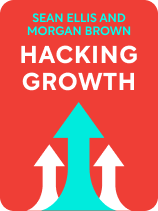

This article is an excerpt from the Shortform book guide to "Hacking Growth" by Sean Ellis and Morgan Brown. Shortform has the world's best summaries and analyses of books you should be reading.
Like this article? Sign up for a free trial here.
How do you create a must-have product? What are some of the characteristics of products that are considered “must-haves”?
To create a product or service that won’t go out of business, you need to ensure that your customers won’t want to miss out on it. A must-have product delivers so well on a target market’s needs that people would be unhappy if they lost it.
Here’s how to create a must-have product.
Ensure Customers Can’t Go Without Your Product
A must-have product should deliver a “click” moment—an experience where customers suddenly see how the product is indispensable to them (the authors call this an “aha” moment). For instance, a cloud-based writing platform might “click” for a remotely distributed writing team when they see how it lets them collaborate without time or location constraints.
According to the authors, you can determine whether your product is indispensable by running a simple survey. In short, they recommend that you ask your users how they would feel if they could no longer use your product. Offer the following multiple choice answers: Very disappointed, disappointed, neutral, not bothered. If at least 40% of your users would be very disappointed, your product is indispensable.
| Product Validation Methods The authors’ above strategy is one way of validating a business idea. Validating your product or service is a common strategy that many businesses perform before heading to market. Other validation methods include: Ask yourself what problem you’re trying to solve, research whether there’s a market for your solution, and clearly articulate the unique value you’ll provide. Interview potential customers to ensure that the problem you’re trying to solve actually matters to them. Try test-selling a prototype of your product to see whether it can sell well. Note as well that user surveys aren’t always reliable, for more than one reason. Often, the sample size for a survey (how many people you ask) is too small and doesn’t accurately represent the larger population. In addition, survey writers can inadvertently write biased questions that prompt people to give certain answers—for instance, asking your users about their level of disappointment only allows them to answer in terms of disappointment. In reality, they might feel a wider set of emotions about the product, but the question hems them in. |
To determine your “click” moment, use these two tactics:
- Tactic #1: Reach out to the 40% of loyal users who’d be very disappointed to lose your product or service and ask them about their favorite features. This tells you what people already love about your product.
- Tactic #2: If you already have user data, look for patterns in the behavior of your users. Find the overlaps in how they use the product to identify your most valuable features.
If you don’t have that 40% of loyal users or an obvious click moment, the authors recommend improving your product before you do growth hacking. Start by asking the users who wouldn’t mind losing your product about the alternatives. What would they use instead? Then, research those competitors’ products and use that information to improve your own.
(Shortform note: Finding the “click” moment has become a common tactic in startup culture, particularly with software-as-a-service (SaaS) companies using the agile, evidence-based strategies advocated by the authors. Some call that moment an “emotional reaction” you have when seeing the true value of a product—for instance, you might’ve thought aha when you saw how cloud storage allows you to sync your work across multiple devices. Another way to find these is to conduct new user interviews and listen for any positive emotion in how they describe using your product.)
Don’t be afraid to pivot if your click moment isn’t what you expected. The authors say that many major companies began with products that they changed to better deliver on the customer’s favorite features. For example, the messaging app Slack came about after parent company Tiny Speck failed to launch an online video game, and they instead pivoted to selling the messaging tool they had built to communicate between offices about the game.(Shortform note: While pivoting is common, some companies recommend staying the course with your original ideas. One big example is Pinterest: Founder Ben Silbermann explains that many of the features you’ll see on Pinterest today were part of their original design. While the company grew slowly and looked to be struggling early on, they stuck to their vision and gradually built a community of dedicated users around a product they loved.)

———End of Preview———
Like what you just read? Read the rest of the world's best book summary and analysis of Sean Ellis and Morgan Brown's "Hacking Growth" at Shortform.
Here's what you'll find in our full Hacking Growth summary:
- Why the old approaches to marketing no longer work in a high-tech world
- How to rapidly increase your revenue and grow your business
- A step-by-step guide on how to use the growth hacking method






